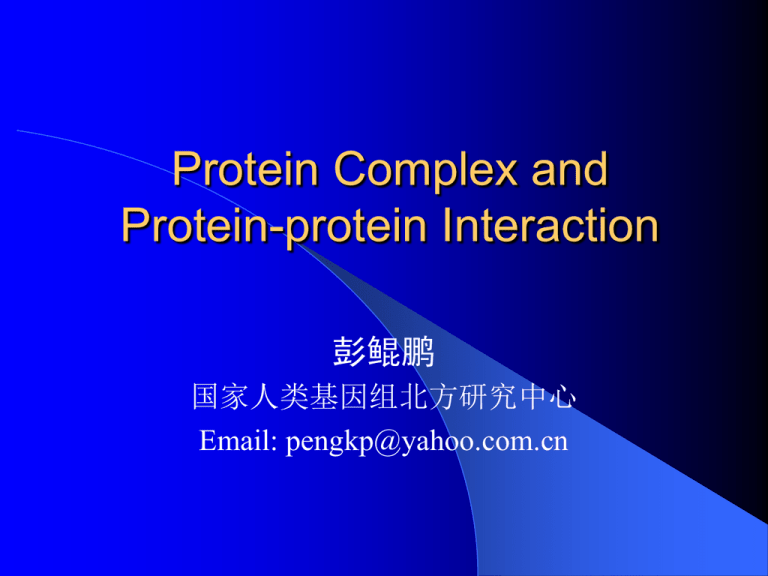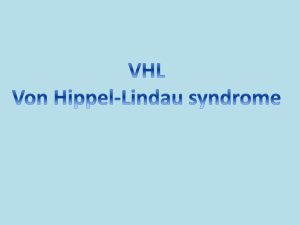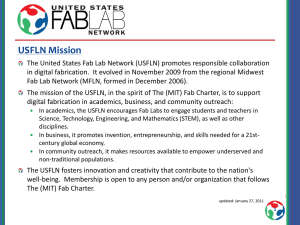
Protein Complex and
Protein-protein Interaction
彭鲲鹏
国家人类基因组北方研究中心
Email: pengkp@yahoo.com.cn
Protein is the final player in cell life
Central dogma:
the story of life
DNA
RNA
Protein
Proteins function in association with
other proteins or biomolecules, but
not in isolation
Introduction to Proteomics
the
analysis of genomic complements
of proteins
dynamic
systematic
discovery-driven
Goals of Proteomics
to discover
drug target
to understand
cellular processes
to discover
protein function
to understand
disease states
to identify
biomarker
Types of Proteomics
Expression Proteomics
– Quantitative study of protein expression and
their changes between samples that differs by
some variable
Functional Proteomics
– To study protein-protein interaction, 3-D
structures, cellular localization and PTMs in
order to understand the physiological function
of the whole set of proteome.
Approaches
Genetic:
yeast two-hybrid
phage display
Biophysical:
Mass Spectrometry
SPR
FRET
Biochemical:
Blue native PAGE
Far Western
Pull-down
Coimmunoprecipitation
TAP
Crosslinking
Bioinformatic:
Co-occurrence
Neighborhood
Surface patch
Blue Native PAGE
separation of native proteins in complex.
Coomassie Blue G: stable and negatively
charge multiprotein complex.
6-aminocaproic acid: solubilize membrane
protein complex instead of salts.
the resolution is not so high that the
prepurification is needed.
Anal Biochem 1991, 199:223-231
Blue Native PAGE
_
detergent
CBB
6-ACA
+
Blue Native PAGE
Sample Preparation
Blue Native PAGE
SDS-PAGE
Solubilization with nonionic
detergent (laurylmaltoside, TX-100,
CHAPS, Mega 9, octylglucoside,
Brij 35, etc), supplemented with
6-aminocaproic acid
Separation gel: 6-13% gradient
Cathode buffer contains
0.02% Coomassie blue G250
Separation of members of
multiprotein complex
Blue Native PAGE of chloroplast
thylakoid membranes
BN-PAGE of solubilized
chloroplast thylakoid
membranes (a)
followed by SDS–PAGE in
the second dimension (b).
CF0F1 ATP synthase was
indicated.
BBRC 1999, 259:569-575
Blue Native PAGE of chloroplast
thylakoid membranes
lane 1: LMW marker
lane 2: CF0F1 ATP synthase,
purified by density gradient
centrifugation
lane 3: electroeluted protein
from the intense band (Rf=
0.38) in BN-PAGE (a).
BBRC 1999, 259:569-575
Blue Native PAGE of multiprotein
complex from whole cellular lysate
Dialysis permits
the analysis of
multiprotein
complexes of
whole cellular
lysates by BNPAGE.
MCP 3:176-182, 2004
Blue Native PAGE
Identification and analysis of distinct
proteasomes by WCL 2D BN/SDS-PAGE
A, WCL of HEK293 cells was separated
by 2D BN/SDS-PAGE (5.5–14 and 10%,
respectively), and immunoblotting was
performed with specific antibodies
recognizing either subunits of the 20S core
complex (Mcp21 and 2), or a subunit of
the 19S cap of the 26S proteasome (S4
ATPase), or a subunit of the PA28
regulatory subunit (PA28).
B, An identical sample was boiled in
1% SDS, resolved by 2D BN/SDSPAGE, and immunoblotted as
described in A.
MCP 3:176-182, 2004
Blue Native PAGE
Visualization of MPCs on a 2D WCL
BN/SDS gel
A, WCL of HEK293 cells was prepared B, WCL of HEK293 cells was
using Triton X-100 and separated by
boiled with 1% SDS before
2D BN/SDS-PAGE (5.5–17 and 10%, separation and staining.
respectively).
MCP 3:176-182, 2004
Far Western
Far Western
Max: functional cloning of a Myc-binding protein
MycC92
A. CKII, casein kinase II phosphorylation
site; BR, basic region; HLH, helix-loophelix; LZ, leucine zipper.
B. Plaques that express beta-galactosidase
fusion prteins were screened for their ability
to react with 125I-labeld GST-MycC92. Top
left, secondary plating of five putative
positive demonstrates the reactivity of two
of the primary plaques, Max11 and Max14.
Top right, as a negative control, GST was
labeled to a similar specific activity and
compared with GST-MycC92 for bidning to
Max14 plaques. Bottom, binding of GSTMycC92 to Mzx14 plaques was assayed
with or without affinity purified carboxyl
terminal-specific anti-Myc (Ab) or peptide
immunogen (peptide).
Science 251:1211-7, 1991
Far Western
Association of Rb with HIP1
HeLa nulear extract (~100 ug) (lane
1, 2) and HIP1 (~200 ng) purified
from HeLa (lane 3, 4) were
electrophoresed, blotted, and
renatured in situ. Adjacent strips
were cut from the filters and probed
with 32P-GST-RB(379-928) (lane 1,
3) or 32P-GST-RB(379-928;706F)
(lane 2, 4)
Cell 70:351-364, 1992
GST Pulldown
GST Pulldown
Interactions of Cellular Polypeptides with the
Cytoplasmic Domain of the Mouse Fas Antigen
Fas: 45-kilodalton transmembrane receptor that initiates
apoptosis;
The biochemical mechanisms responsible for Fas action are
incompletely understood;
the cytoplasmic domain is clearly necessary for Fas to function
as a receptor;
The cytoplasmic domain does not display any known enzymatic
activities but is capable of interacting with a number of proteins.
JBC 271:8627-32, 1996
GST Pulldown
GST-mFas fusion proteins
1
149
166
204
293
194
306
194
292
194
283
194
276
194
194
268
221
194
221
306
306
306
GST Pulldown
GST-mFas-associated polypeptides from 32Slabeled HeLa, L929, and Jurkat cell lysates
Preclearation: 25 ug GST/50 ul
GSH-Seph.
Incubation: 10 ug GST/GSTmFas-(194-306)
Wash: 0.5% NP-40, 20 mM Tris,
pH 8.0, 200 mM NaCl
Elution: 50 ul 20 mM GSH in 50
mM Tris
GST Pulldown
GST-mFas-associated polypeptides
are stable to high salt concentrations
HeLa cell lysates were screened
with either GST or GST-mFas(194–306) as described above
except that the Sepharoseprotein complexes were washed
with Lysis Buffer containing
different salt concentrations (as
indicated). The eluted material
was subjected to 12% SDSPAGE and fluorography.
GST Pulldown
Association is blocked by preincubation with a
polyclonal antibody against GST-mFas
A. the antibody recognized the
Fas intracellular domain;
B. association of proteins from
HeLa lysate with GST-mFas
was blocked by anti-GST-mFas
IgG;
C. anti-GST antibody had no
effect up to 100 ug of IgG.
GST Pulldown
Differential association with mutant
forms of GST-mFas
HeLa
L929
292
283
276
268
221
GST Pulldown
Schematic representation of the mouse Fas
antigen and its binding proteins
GST Pulldown
Epitope tagging
1
2
3
4
6-9
5
Co-Immunoprecipitation
In the intact cell, protein X is present in a complex
with protein Y. This complex is preserved after cell
lysis and allows protein Y to be
coimmunoprecipitated with protein X (complex 1).
However, the disruption of subcellular
compartmentalization could allow artifactual
interactions to occur between some proteins, for
example, protein X and protein B (complex 2).
Furthermore, the antibody that is used for the
immunoprecipitation may cross-react
nonspecifically with other proteins, for example,
protein A (complex 3). The key to identification of
protein:protein interactions by
coimmunoprecipitation is to perform the proper
controls so as to identify protein Y but not protein
A and B.
Co-Immunoprecipitation
Antibody Identification
The protein against which the antibody was raised should
be precipitated from cell lysate.
(1) Independent antibodies raised against the same protein
recognize the same polypeptide;
(2) Target protein should not be identified with antibodies
from cell lines without target protein;
Co-Immunoprecipitation
False positive and control
1. Antibody control
Monoclonal Ab: another MoAb against similar protein
Antiserum: serum before immunization from the same animal
Polyclonal Ab: purified PoAb against another protein
2. Multiple antibodies
different Abs against different epitopes;
the epitope may be the site for association with other proteins;
3. Cell lines depleted of target protein
Control experiment should be practised in depleted cell lines
4. Inactive biological mutant
5. Interaction verification before and after cell lysis
unphysiological interaction
Co-Immunoprecipitation
Reduction of nonspecific protein
background
1. to increase ionic strength in wash buffer;
2. to reduce the amount of primary Ab;
3. to preclear cell lysate with control Ab.
Co-Immunoprecipitation
Binding of pVHL to Elongin B and C
1. von Hippel-Lindau disease is a hereditary cancer
syndrome characterized by the development of multiple
tumors;
2. VHL susceptibility gene, mutated in the majority of
VHL kindreds, is a tumor suppressor;
3. to elucidate the biochemical mechanisms underlying
tumor suppression by pVHL, search for cellular proteins
that bound to wt pVHL, but not to tumor-derived pVHL
mutants.
Science 269:1444-6, 1995
Co-Immunoprecipitation
Identification of VHL-associated proteins
Lysates from 786-O renal
carcinoma cells, transfected with
the indicated pVHL constructs,
were immunoprecipitated with
anti-HA (A and B) or with antiVHL (C).
Detection by autoradiography (A,
C) or by immunoblotting (B).
anti-VHL
open arrows: exo pVHL
closed arrows: VHL-AP
pVHL(1-115): without residues frequently altered by naturally occurring VHL mutations
and, unlike pVHL(wt), does not suppress tumor formation in vivo.
pVHL(167W): the predicted product of a mutant VHL allele that is common in VHL
families.
Co-Immunoprecipitation
Mapping the p14 and p18 binding
site on pVHL
A. 786-O cells producing HA-VHL(wt) or HAVHL(1-115) were labeled with 35S-methione,
lysed, and immunoprecipitated with anti-HA.
Parental 786-O cells were similarly labeled, lysed,
and incubated with GSH Sepharose preloaded with
GST-VHL(117-213) or GST alone.
a-HA
B and C. 786-O cells were labeled, lysed, and
incubated with GSH Sephorase preloaded with
the indicated GST-VHL fusion protein. In (C), the
indicated peptides (final conc. ~0.1, 1, or 10 uM)
were added to the GST-VHL fusion protein before
incubation with the radiolabeled extract. The wt
peptide is TLKERCLQWRSLVKP (underlined
residues are sites of germ-line missense mutations).
The mutant peptide is TLKERFLQWRSLVKP.
Co-Immunoprecipitation
the binding site for Elongin B and C
in pVHL
Distribution of germ-line VHL mutations.
The shaded region represents the bidning
site for Elongin B and C.
Co-Immunoprecipitation
Binding of pVHL to Elongin B and
Elongin C in vivo
A. ACHN (VHL +/+), CAKI-1 (VHL
+/+), 786-O (VHL -/-), and 293 (VHL
+/+) cells were labeled with 35Smethione, lysed, and immunoprecipitated
with anti-VHL or a control antibody. The
immunoprecipitaes were washed under
high-salt conditions. The identification of
pVHL(wt) (open arrow) was confirmed
by anti-pVHL immunoblot analysis. The
~19 kD protein immediately above p18 (*)
in the ACHN, CAKI-1, and 293 cell antiVHL immunoprecipitates reacts with a
polyclonal antibody to VHL.
B. Comparison of peptides generated by
partial proteolysis of Elongin B and C,
translated in vitro, with p18 and p14.
TAP: tandem affinity purification
TAP
Sequence and structure of the TAP tag
bait
CBP
TEV
Ig BD
TAP
Overview of the TAP procedure
TAP
Schematic representation of the
split TAP tag strategy
TAP
Schematic representation of the
substraction strategy
TAP
Protein composition of TAPpurified U1 snRNP
TAP
Step-by-step analysis of the TAP strategy
Proteins present in the final TAP fraction
(lanes 7 and 8), or present after each of the
single affinity purification steps (lanes 1–4),
were analyzed. Snu71-TAP (lanes 1, 3, and
7) or wild-type extracts (lanes 2, 4, and 8)
were used. Lane 5: molecular weight
marker. Lane 6: an amount of TEV protease
identical to the amount used to elute
proteins bound to IgG beads (lanes 2, 3, 7,
and 8). Right arrows indicate the U1
snRNP-specific proteins including the
tagged Snu71p after TEV cleavage; the
arrow on the left indicates the Snu71p
protein fused to the TAP tag before TEV
cleavage.
TAP
TAP in higher eucaryotes
Questions:
overexpression
endogenous expression
Solutions:
RNA interference
Knockin technique
Strengths and weaknesses of commonly
used affinity approaches for the retrieval
of protein complexes
FRET:
fluorescence resonance energy transfer
When will FRET occur?
Donor
emission
Acceptor
absorption
1) Spectral overlap
Donor emission spectrum must
significantly overlap the absorption
spectrum of the acceptor (>30%)
2) Distance between the donor and
acceptor is between 2 - 10 nm
3) Favorable orientation of fluorophores
2 ~ 10 nm
FRET
R0 = 4.9 nm
E: energy transfer efficiency
E = R06/(R06 + r6)
R0: intermolecular distance when half of energy is transfered
r: distance between fluorophores
when r = 2R0, E = 1/65
FRET
Imaging protein phosphorylation by FRET
target
GFP
Fab
Cy3
microinjection
or incubation
transfection
laser
Fab Cy3
target
GFP
activator
FRET
Detection of protein interaction by FRET
Protein 2
FITC
Protein 1
Cy3
in vitro
target
Fab
GFP
Protein 2
YFP
Protein 1
CFP
Cy3
phosphorylation
in vivo
FRET
FRET reveals interleukin (IL)-1dependent aggregation of IL-1 type I
receptors that correlates with
receptor activation
JBC 270:27562-8, 1995
FRET
Abbreviation
IL-1: interleukin 1
IL-1 RI: IL-1 type I receptor
IL-1ra: IL-1 receptor antagnist
CHO-mu1c: CHO-K1 cells stably transfected with wildtype IL-1 receptor
CHO-extn: CHO-K1 cells stably transfected with
cytoplasmic tail-truncated IL-1 receptor
M5: noncompetitive anti-IL1 RI monoclonal antibody
FITC-M5: M5 labeled with a donor probe, FITC
Cy3-M5: M5 labeled with a acceptor probe, Cy3
FRET
IL-1a-dependent FRET between donor
FITC-M5 and acceptor Cy3-M5 bound to
IL-1 RI on the surface of CHO-mu1c cells
IL-1a
IL-1ra
control
IL-1a
IL-1ra
A, a mixture of 5 nM FITC-M5 and 5 nM Cy3-M5
was incubated with CHO-mu1c cells (3 X 106
cells/ml) containing wild-type transfected receptors
for 50 min at 22 °C. IL-1a or IL-1ra was added at
a final concentration of 30 nM immediately after
the time point at t = 0 min (arrow), and changes in
the ratio of Cy3-M5 fluorescence to FITC-M5
fluorescence were monitored over time. Changes in
this ratio were also monitored for the control
sample to which no ligand was added. B,
normalized fluorescence ratio for cells with added
IL-1a or IL-1ra calculated from data in A.
FRET
IL-1a but not IL-1ra causes aggregation
between IL-1 RI-labeled with FITC and Cy3
Fab fragments of M5 as detected by FRET
IL-1a
IL-1ra
A mixture of 20 nM FITC-M5-Fab and
20 nM Cy3-M5-Fab was added to
CHO-mu1c cells transfected with wildtype receptors and incubated at 22 °C
for 50 min. IL-1a or IL-1ra was added
to a final concentration of 10 nM
immediately after the time point at 0
min. Changes in the normalized ratio
of Cy3-M5 Fab fluorescence to FITCM5 Fab fluorescence were monitored
over time at 22 °C.
FRET
IL-1-dependent energy transfer
between IL-1 RI is temperature
B
A
A mixture of 20 nM FITC-M5 Fab and 12 nM
Cy3-M5 Fab was added to CHO-mu1c cells (3
X 106 cells/ml) with transfected wild-type IL-1
RI and preincubated at either 4 °C (A) or 22
°C (B) for 50 min. Immediately after the baseline data point at t = 0 min, IL-1a was added
(arrow) at a final concentration of 10 nM to
both samples. Changes in the normalized ratio
of Cy3-M5 Fab fluorescence to FITC-M5 Fab
fluorescence was monitored over time at the
corresponding preincubation temperature. At t =
85 min, the temperature for sample (A) was
changed from 4 to 22 °C, and the temperature
for sample (B) was changed from 22 to 4 °C.
Changes in the normalized fluorescence ratio
continued to be monitored until t = 180 min.
FRET
IL-1a-dependent FRET can be detected between FITCM5 Fab and Cy3-M5 Fab bound to the cytoplasmic tail
deleted mutant IL-1 RI on CHO-extn cells
A
B
A mixture of 20 nM FITC-M5 Fab and 12
nM Cy3-M5 Fab was added to wild-type
transfected receptors on CHO-mu1c cells
and incubated at 22 °C for 50 min (A). A
mixture of 20 nM FITC-M5 Fab and 12 nM
Cy3-M5 Fab was added to CHO-extn cells
(cytoplasmic tail deleted mutant IL-1 RI) and
incubated at 22 °C for 50 min (B). IL-1a
was added to a final concentration of 20 nM
at the arrow, and changes in the normalized
ratio of Cy3-M5 Fab fluorescence to FITCM5 Fab fluorescence were monitored over
time at 22 °C.
SPR: Surface Plasma Resonance
SPR
Diagram of BIAcore
SPR
Interactions between
lectins and immobilized glycoproteins
SPR
Interactions between
lectins and immobilized glycoproteins
An overlay plot of binding curves
showing the interaction between
lectins and immobilized thyroglobulin.
Lectin solutions (50 µg/ml in 10 mM
HEPES, 0.5 mM MnCl2 , 0.5 M
CaCl2 and 0.05% surfactant, pH 7.4)
were injected. Bound lectin was
dissociated by 100 mM HCl (15 µl, 5
µl/min).
SPR
Summary of the interaction of seven lectins of different
nominal specificities with immobilized glycoproteins
Binding of lectin to the glycoprotein is indicated by “+” and lack of binding
by “-” in the above table. As control experiments, the lectins were injected
over (i) an immobilized non-glycosylated protein (recombinant HIV-1
reverse transcriptase expressed in E. coli) and (ii) a blank surface which
was subjected to immobilizationchemistry in absence of a protein. The
lectins did not show any binding in the control experiments.
SPR
SPR-MS: Ligand Fishing with
Biacore 3000
SPR
MS
Detection
Identification
Selective binding, recovery and identification
by MALDI MS of a specific interaction
partner
Other important techniques in
protein interaction research
Mass Spectrometry
Cross-linking
Ultracentrifuge
ChIP (Chromatin immunoprecipitation)
Mass Spectrometry
Mass spectrometry is indispensable for protein identification
and will be in the center of proteomics research.
High sensitivity
High resolution
High throughput
Reference data bases
Interactions
Prediction server
– Predictome (Boston U)
– Plex (UTexas)
– STRING (EMBL)
– MIPS
– DIP
– YPD
– Intact (EBI)
– BIND/ Blueprint
– GRID
– MINT
Protein complexes
– MIPS
– YPD
From defining the proteome
to understanding function
Thanks!





